Historic Leeds Pubs
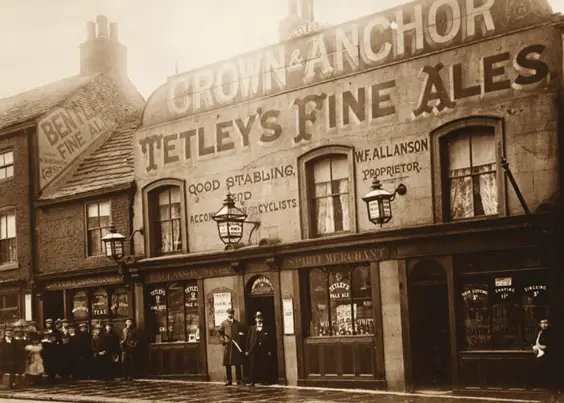
Paul Chrystal’s book ‘Central Leeds Through Time’ (Amberley Publishing, 2016, £14.99) charts Leeds’s evolution through a collection of captivating photographs. In this excerpt, the author documents the rich and varied history of some of Leeds’s most historic pubs…
The Bull and Mouth Hotel
Originally the Red Bear at No. 138 Briggate, between Duncan Street and Kirkgate, it is one of Leeds’s oldest hostelries. It was once a depot for heavy baggage wagons and became a coaching inn in 1800. Soon one of the busiest inns in Leeds, it had standing room for thirty horses in the cellar stables. The Loyal Duncan was the first coach to run from here and the True Briton left from here every morning at 10am for Manchester, arriving at 6:30pm. In 1903, it was renamed the Grand Central Hotel; in 1921 the name was changed again to the Victory Hotel – it closed in 1939.
The original name, as with the coaching house in London’s Aldersgate Street, derives from ‘Boulogne Mouth’, a reference to the town and harbour of Boulogne, as besieged by Henry VIII. The modern image shows the dramatic masks of tragedy and comedy on the sign for the Scarbrough Hotel in Bishopgate Street. The masks were first seen when Henry Scarbrough took over the property in 1826 as the Kings Arms. In the late 1890s, Fred Wood established The Scarbrough Hotel pub, organising talent nights, and any act showing promise was put on at his City Varieties.
Binks’s Hotel
Binks’s Hotel Or the Rose & Crown Hotel, a coaching inn in Rose and Crown Yard off Briggate, looking towards Lands Lane in 1887. From 1783 the Defiance coach ran from here to Hull. It was demolished to make way for the Queens Arcade in 1889.
Lighted signs advertise for Binks’s Bars No. 1 and No. 2 and billiard rooms. Binks’s Hotel is named after the landlady, Maria Binks. Opposite is the Morley Dining Room which offers ladies rooms, good beds, tobacco and cigars. The modern photograph below shows The Ship, next to Pack Horse Yard.
The Albion Hotel, Briggate
The Albion was built in 1824 and rebuilt (as here) in 1874 on the east side of Briggate at No. 142. The archway leads onto Albion Yard where there were stables and coach houses. It was all demolished to make way for F. W. Woolworth Co. which opened on 1 December 1928 – Leeds’s second Woolworths.
The magnificent façade of The Horse & Trumpet in The Headrow is the subject of the new photo below. Dating from 1825, the pub has long been associated with the Yorkshire Hussars Cavalry Regiment (originally the 1794 Yorkshire West Riding Yeomanry), hence all of the cavalry paraphernalia on the façade.
The Leopard, Briggate
A popular haunt of clothiers from Farsely. Daniel Defoe describes the importance of pubs to the clothing industry in Leeds; he observed that the cloth market was a swift, early-morning affair starting at 7 a.m. and was all over by 9 a.m. when it was time for a good breakfast, taken at public houses near the bridge.
These meals were called brig-end-shots, which, according to Ralph Thoresby, ‘the clothier may, together with his Pot of Ale, have a Noggin o’ Pottage, and a Trencher of either Boil’d or Roast Beef for two Pence’. A very different creature features in the City Museum where a resplendent Roman mosaic resides, depicting the legendary she-wolf Lupa suckling Romulus and Remus, founders of Rome. It dates from c. 250 and was discovered at Aldborough.
The Malt Shovel and the Unicorn Inn
Over the road from each other in Lower Headrow – or Lowerhead Row as it was called then. On the left at No. 26 is the Malt Shovel; at No. 31 is the Three Legs inn and further down, The Vine. Youngman’s fish shop is visible on the right; the Osborne Commercial Hotel is even further down on the left.
The lower image is the Crown & Anchor in North Street in 1901. The landlord William Francis Allanson served Tetley’s Fine Ales and offered good stabling and accommodation for cyclists.
To the left is the Victoria Inn, serving Bentley’s Beer; the landlord was N. Hutchinson. To the right are dining rooms, run by Mrs Charlotte Ann Dawson, and a barber’s shop, run by William Williams.
The Old Cock & Bottle
Formerly a coaching inn, this was an eighteenth-century coaching inn on the junction of Upperhead Row (No. 18) and Guildford Street. It was always popular with the casts and crews at the Hippodrome behind it. In 1938, it was sold to Snowden Schofield and was part of his store until it was demolished in 1961. The Market Tavern (see gallery), known as The Madhouse in 1914, near the Kirkgate Markets, on the corner of Harewood Street and George Street, won its nickname from the civil unrest which was a frequent occurrence in the pub.
The photo is looking from Ludgate Hill. Apparently, there was a one-armed bar steward working there called Eli who had a lot of girlfriends. It was not a place for the faint-hearted and a comment on the Leodis website states that there was ‘a regular who had what looked like a thimble stuck on his nose, turned out someone bit the end of his hooter off in a scrap, it was recovered and sewn back on at the nearby Public Dispensary. I don’t think the surgeon would have earned much in the tailoring trade!’ George Day, brass founder and finishers, can be seen on the left with premises at the back of George Street.
Whitelock’s Ale House, 1715, on Turk’s Head Yard off Briggate
Grade II-listed Whitelock’s Ale House first opened its doors in 1715 as the Turk’s Head Inn, fittingly enough, on Turk’s Head Yard. It is Leeds’s oldest surviving pub. In 1867, John Lupton Whitelock, a flautist with the Hallé and Leeds Symphony Orchestra, was granted the licence of the Turk’s Head. The Whitelock family bought the pub and in 1886 completed a refurbishment which has left the decor we can see today, including the long marble bar, etched mirrors and glass.
In the mid-1890s, the pub was rebadged as Whitelock’s First City Luncheon Bar and in 1897 John Lupton Whitelock installed electricity, including an exciting new revolving searchlight, at the Briggate entrance to the yard. Trick beer glasses in which a sovereign was placed ensured the punter got, not the money, but an electric shock. John Betjeman described Whitelocks as ‘the Leeds equivalent of Fleet Street’s Old Cheshire Cheese’ and ‘the very heart of Leeds’. One of the Great Bars of the World, the pub rubs shoulders with the Long Bar in Shanghai’s Peace Hotel and Harry’s in Venice.
The Old George Commercial Hotel
Located on the east side of Lower Briggate, the Old George Commercial Hotel closed in 1919. There is a Templar cross on the façade indicating that it was originally owned by the Knights Templar in the thirteenth century. In the seventeenth century, it opened as Ye Bush. The name was changed in 1714 to The George; the ‘Old’ was supplemented around 1815 when the George & Dragon opened nearby. It was known as Simpsons Commercial Hotel after the Simpson family who ran it at the turn of the century.
Celia Fiennes stayed here on her horseback journey around Britain; Charlotte Bronte once visited and drew on this in her illuminating description of the pub in Jane Eyre. It closed down around 1919 when the licence was not renewed and was demolished shortly after. The owner was William J. Cudworth, a York Quaker who had inherited the pub and with it a dilemma – he was obviously opposed to alcohol. He determined, however, that he would keep it open until the existing landlady, Mrs Simpson, died. Headrow House in The Headrow is in the new picture, converted from a nineteenth-century textile mill in Bramley’s Yard.
The Griffin, 1872, Boar Lane
The pub is on the site of the earlier Griffin Hotel, a coaching inn from at least the seventeenth century. The building was restructured as a railway hotel for the new station which opened in 1869 and was owned by the joint London and North West and North East Railway.
The Gothic Revival building boasted a unique Potts clock at its corner with the hours ingeniously replaced by the words ‘Griffin Hotel’. For many though, the Griffin will be cherished as the place where Leeds United was born.
The Pack Horse
The Templar cross can be seen at the front of this ancient pub in Pack Horse Yard off Briggate. The cross tells us that it was originally part of the manor of Whitkirk and it was owned by the Order of St John of Jerusalem, successors to the Knights Templar.
It opened in 1615 although there may have been a drinking house on the site in the sixteenth century; some say it goes back to the 1130s. In 1615, it was the Nag’s Head and then the Slip Inn from 1770. It was renovated in 1982 when fifteenth-century elements were discovered.
The Harrison Arms in Harrison Street and the Old George Commercial Hotel also bear a Templar cross.
‘Central Leeds Through Time’ by Paul Chrystal is available from Amberley Publishing, £14.99
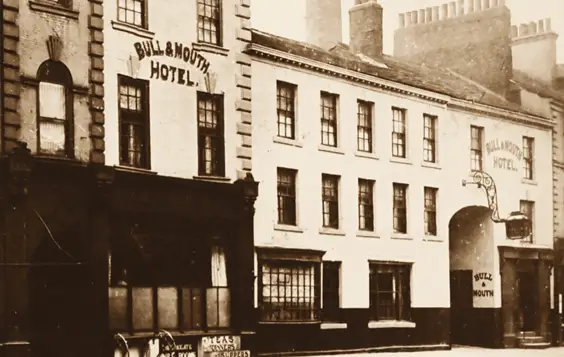
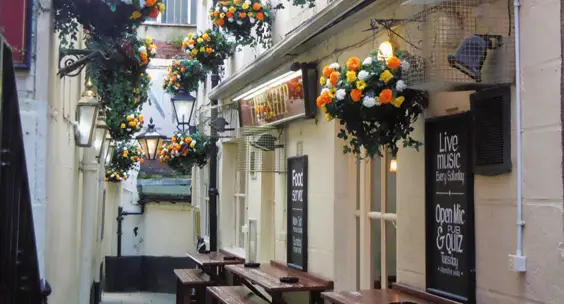
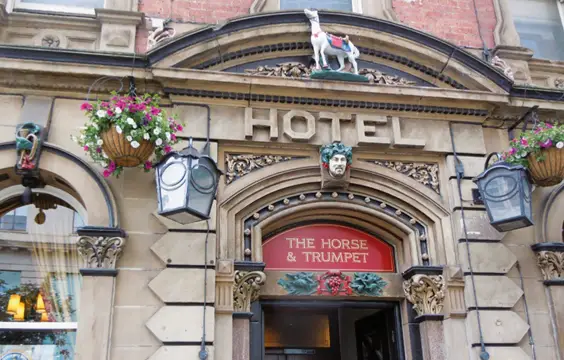
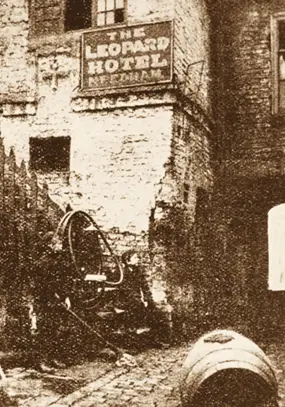
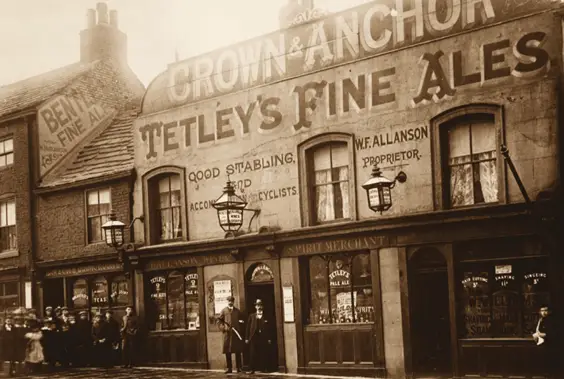
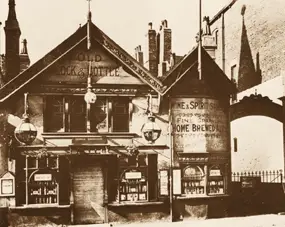
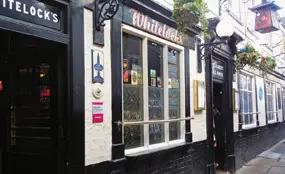
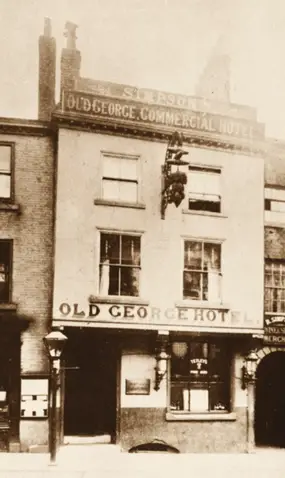
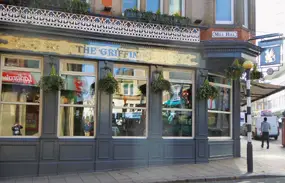

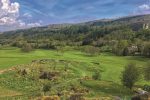
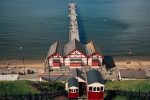
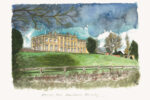






We all used to meet in the Whitelock’s at 8pm on a Saturday and after a good dose of Youngers bitter we would then head for the Majestic Dance Hall
Do you have any information on the Red Lion Hotel, Ludgate Hill. A distant relative once ran it, and I believe his son ran the Old Cock and Bottle. Thanks, Mark
Any information on the Bull and Butcher Inn, 1, Copley Court, Holbeck. My great grandparents ran this pub for a while ?
would like to know the history of the commercial pub in kippax leeds
as I was born in leeds and did a lot of drinking there, the photos and notes about old pubs was very good
john harper
The commercial inn kippax, was built in 1881 and owned by Bentley brewery. It was built on the side of an older pub called medhurt pub, blue anchor before that but that was knocked down which became the small car park at the side which is council owned. The commercial is on my house deeds as my house was auctioned in there in 1990s hope this helps abit.
hi have a small water colour picture in a really old frame of the same picture in black and white of the pack horse pub but mine has a man standing outside and a woman sweeping and a cat in picture its signed E.beecroft twice in left bottom corner and in right bottom corner says ye old pack horse leeds but thers no date could you tell me who did the one you have put on and what date please
Have you any details of the Sheapscar Hotel Scott Hall road Leeds. My Farther was the landlord there in 1972 till 1974 i have vivid memories of living there when I was 12.
The Pack Horse is not next to the ship!
Do you have any photos of some of these pubs inside. Is there any photos of old night clubs e.g. Ace of Clubs Woodhouse street Windmill North street.All Leeds
Do you have any information about the Kings Charles Pub, The Market Tavern, The Golden Lion and the Yorkshire Hussars pubs which have all now felt the sledgehammer due to ‘progress’?